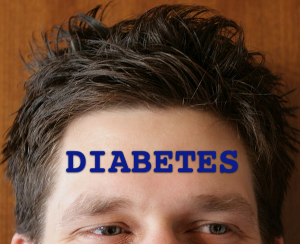Diabetes Doesn’t Have To Be A Death Sentence
 We all know someone who has diabetes, but we may not all understand exactly what this disease does to the body. Diabetes is an incurable, but treatable disease where the body does not produce or properly use insulin. The cause of diabetes continues to be a mystery, although genetics and environmental factors such as obesity and lack of exercise play key roles.
We all know someone who has diabetes, but we may not all understand exactly what this disease does to the body. Diabetes is an incurable, but treatable disease where the body does not produce or properly use insulin. The cause of diabetes continues to be a mystery, although genetics and environmental factors such as obesity and lack of exercise play key roles.
Diabetes can be prevented by lifestyle changes such as eating healthier and getting more exercise. I know this must sound pretty dire — but there is hope! Diabetes is preventable, and, for those who already have diabetes, the life-threatening complications can be prevented by carefully managing the disease. But you must see your healthcare team to successfully fight your diabetes. A person with diabetes may not have symptoms, but common symptoms include:
- Frequent urination
- Excessive thirst
- Unusual weight loss
- Increased fatigue
- Blurry vision
- Slow sores or infections
- Tingling in hands and feet
Type 2 diabetes is the most common form of diabetes. Latinos are more likely than the general population to develop diabetes; it’s estimated that 2.5 million, or 10.4% of Latinos in the U.S. over the age of 20 have diabetes.
It is the sixth leading cause of death among Latinos in the United States and the fourth leading cause of death among Latinas and the elderly. Latinos also are more likely to have undiagnosed diabetes than whites and African-Americans. Nearly half of Latino children born in the year 2000 are likely to develop diabetes during their lives.
By the year 2050, two out of five Latino youth and one in two female Latina youth born in the year 2000 will develop diabetes. About 65% of people with diabetes die from heart disease and stroke. In fact, adults with diabetes are two to four times more likely to have heart disease or suffer a stroke than adults without diabetes. If you develop diabetes before the age of 20, you are more likely to develop kidney disease and die in middle age than non-diabetics who develop kidney disease. Diabetes is often called “the silent killer” because it doesn’t show itself clinically until you get pretty sick.
If you have any of the following risk factors for diabetes, please consider getting tested:
- Being overweight
- Having a parent, brother, or sister with diabetes
- Being older than age 45
- Having had diabetes when pregnant
- Being a Latino, Alaska Native, American-Indian, African-American, Asian-American or Pacific Islander.
Regrettably, only 27% of Latino diabetics get the care they need to properly manage their disease. If diabetics had their blood glucose, blood pressure and blood cholesterol (fat) measured twice a year, kidney disease, blindness, and amputations could be prevented! You would also cut your risk for heart attack and stroke by more than half!
The National Diabetes Education Program’s (NDEP) has an action plan to prevent the complications from diabetes. The NDEP1 provides tip sheets for how to manage your ABC’s in both English and Spanish. The plan of prevention is called the ABC’s to manage your diabetes:
- A1C (glycosylated hemoglobin) is a measure of how well your blood sugar is under control. It should be below 7.
- B is you blood pressure. It should be below 130/80.
- C is your blood cholesterol (fat). LDL, or bad cholesterol should be below 100.
By working with your healthcare team you can take control of your diabetes and live longer and happier lives.
References:
http://takingcontrolofyourhealthcare.com
http://www.idph.state.il.us/idhp/idhp_HispanicRiskForDiabetes.htm
http://ndep.nih.gov/media/ControlGrowingEpidemic_Article.pdf
Jeff Kreisberg is a patient advocate, educator, scientist author of the book “Taking Control of Your Healthcare,” and, until his retirement, a professor at the University of Texas Health Science Center in San Antonio, Texas. For more information or to contact him, visit his website.
[Photo By Frank Vincentz]
